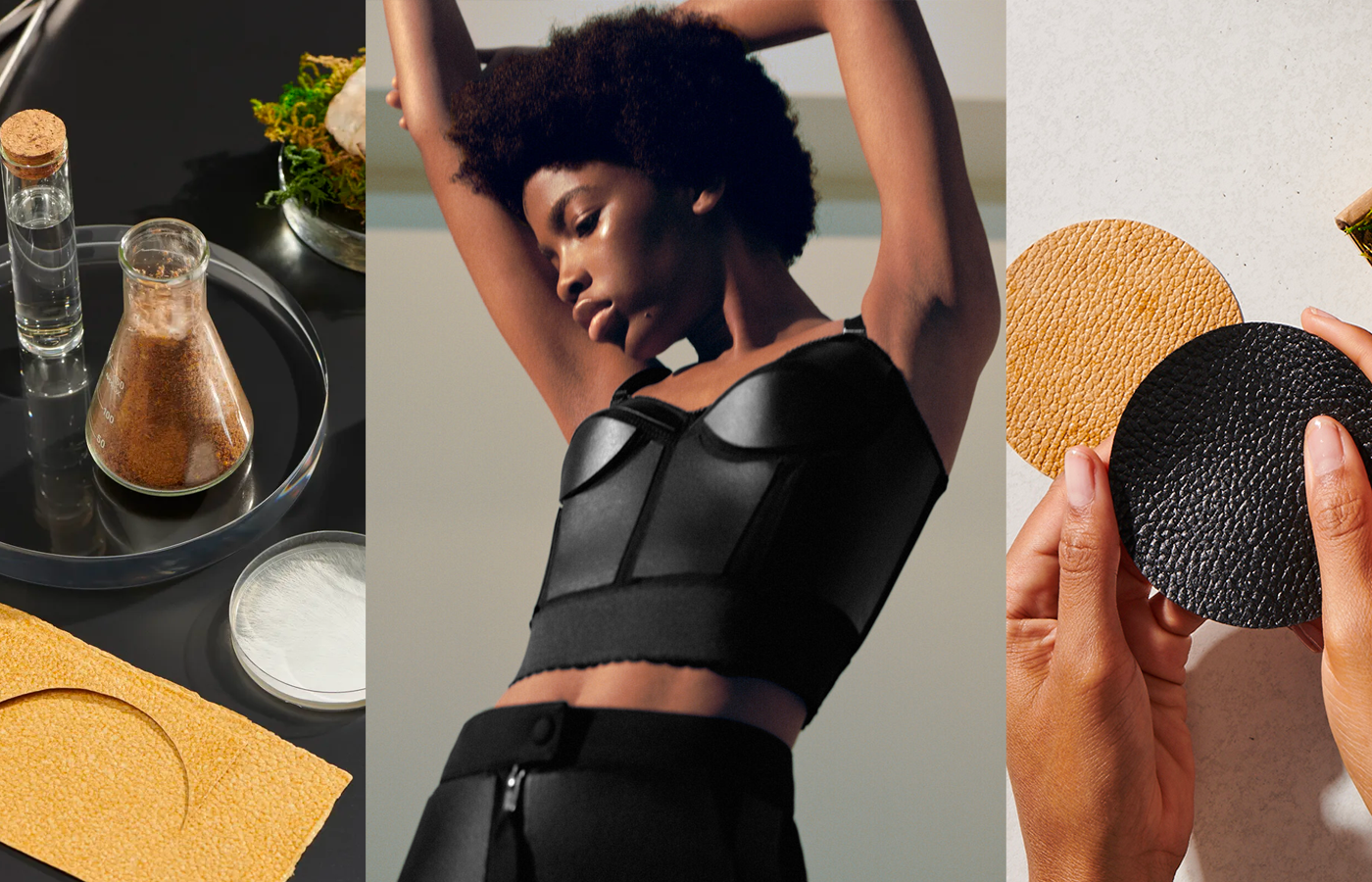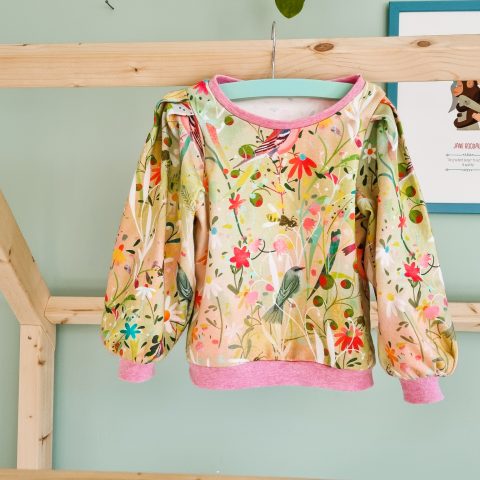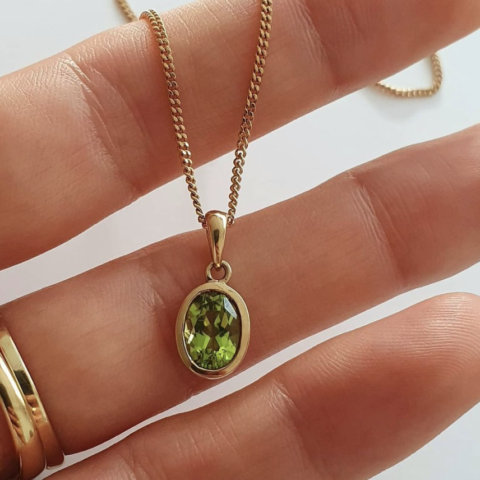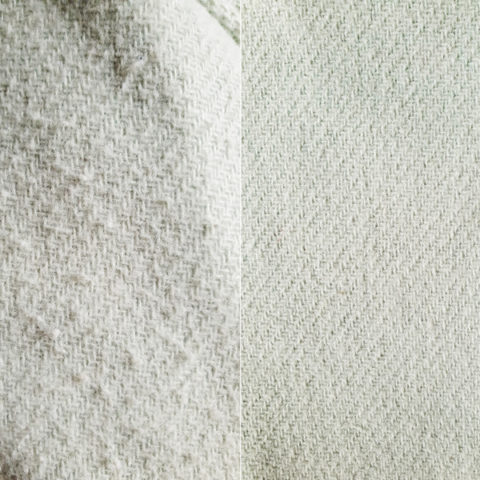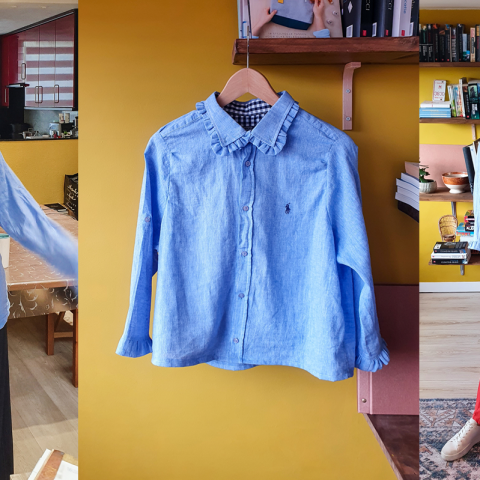Lately there’s been a lot of attention for the problems the fashion industry is facing: atrocities against animals and humans, overproduction and pollution. And that’s a good thing! If there’s no awareness, there’s no incentive for change. But at the same time, so many amazing things are happening, indicating hope for a brighter and cleaner future of fashion. So in this blog I decided to shine a light on some of the positive innovations that are taking place.
Sanne wears sneakers made of apple leather, I own a turtle neck made out of eucalyptus pulp, there are textiles made out of kelp and citrus vibres. Every year clever new fabrics enter the market, of which some succeed to scaling up and reaching the masses. I hope these three innovative fabrics are going to achieve just that, because they might be a real game changer.
1. Lab grown leather
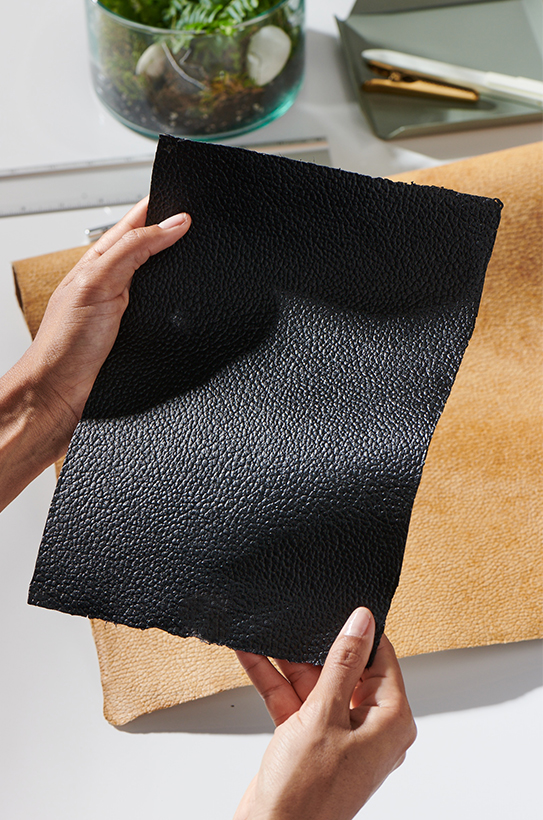
As a worldwide ban on fur is taking place, it looks like leather is next in line, for good reasons. Leather is still seen as a byproduct and therefore assumed it must be cruelty free, but reality begs to differ.
As leather is financially significant to the meat industry, it contributes enormously to the industry’s depletion of water, fossil fuels, pasture land as well as to climate change. More than a billion animals are killed for the leather trade every year. We’re comforted by “Italian leather” stamps, but this could mean that the leather was imported and finished in Italy. Almost all leather – even if it’s labelled, “Made in Italy” or “Made in France” – originates in Bangladesh, China, or India, where animal welfare laws either are non-existent or go unenforced.
In China, the world’s leading exporter of leather, an estimated two million cats and dogs are killed each year for their skin
In India, the slaughter of cows is legal in only three states, so animals may be forced to walk hundreds of miles on “death marches”, during which many collapse and die by the side of the road out of sheer exhaustion. When the survivors arrive at the abattoir, their throats are cut while they’re still conscious.
In China, the world’s leading exporter of leather, an estimated two million cats and dogs are killed each year for their skin. As a customer it’s almost impossible to tell which animal your wearing. You would need a DNA-test to determine whether your lambskin coat is made up of dogskin.

Turning animal skins into leather requires the use of dozens of chemicals, including highly toxic mineral salts, formaldehyde, coal-tar derivatives, and various oils, dyes, and finishes, some of which are cyanide-based. Tannery run-off contains large quantities of pollutants, such as lime sludge, sulphides, and acids.
the latest innovative gem is leather grown in a lab, setting about disrupting the industry
Studies of tannery workers in Italy found cancer risks “between 20 percent and 50 percent above those expected”, while in developing nations where the industry is poorly regulated, the figures are even more alarming. In certain areas of Bangladesh, 90 percent of leather workers die before the age of 50.
The revolution of lab grown leather
It’s safe to say in this time of age sustainable and cruel free alternatives for leather are not ‘nice to have’ but ‘need to have’. Amazing alternatives are already in the market: leather made from rest products like apple pectin, grape stalks, skins, and seeds and pineapple leaf fibre.
But the latest innovative gem is leather grown in a lab, setting about disrupting the industry. Technology has finally reached the point where it can re-program the self-assembly of collagen molecules in the lab, and build leather-like fabrics that feel soft and supple.
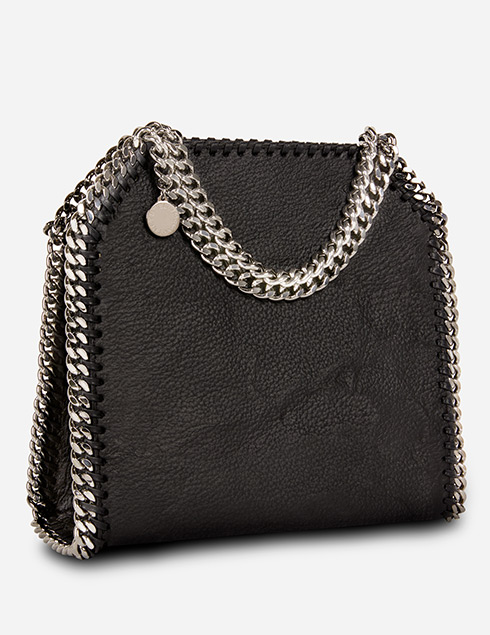
Vogue interviewed two companies who are on the verge of scaling up their lab-grown leather fabrics: Modern Meadow and Bolt Threads. According to Vogue, the latter, Bolt Threads’ Mylo material “is one of the most promising lab grown leathers to emerge on the market. It’s produced by growing fungal cells into mycelium — or mushroom roots — and feeding it sawdust. This creates large sheets of fluffy foam, which is then processed and dyed, turning it into a leather-like material.”
One of Modern Meadow’s processes involves fermenting yeast to grow collagen, the main protein found in leather. The company uses plant-derived proteins — similar to collagen — to create its first leather alternative that’s going to market.
Is lab grown leather the future? “Like any really disruptive innovation, it’s going to take a while for the industry to adopt it in a big way,” says Jamie Bainbridge, Bolt Threads’ VP of product development to Vogue. “But the signal for the demand is huge right now, and I don’t see it dwindling.”
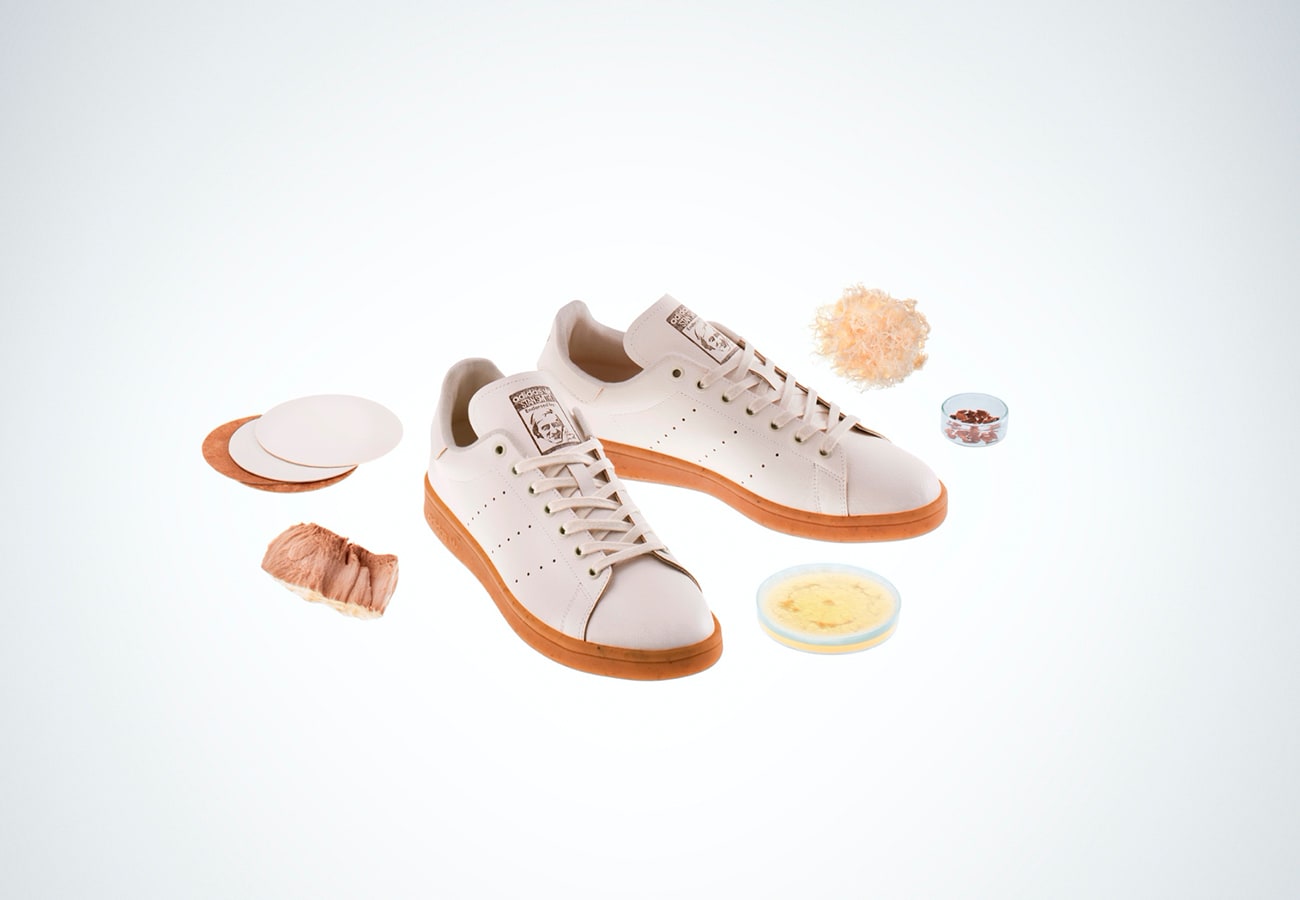
I don’t see it dwindling either. Adidas has just revealed a concept of their first Stan Smith sneaker, featuring an upper that is partly made with Mylo material. According to Adidas the supple material in the paneling looks, feels and performs like leather. The sportbrand is planning on fully integrating lab grown leather in their collections in the near future.
2. Biodegradable polyester
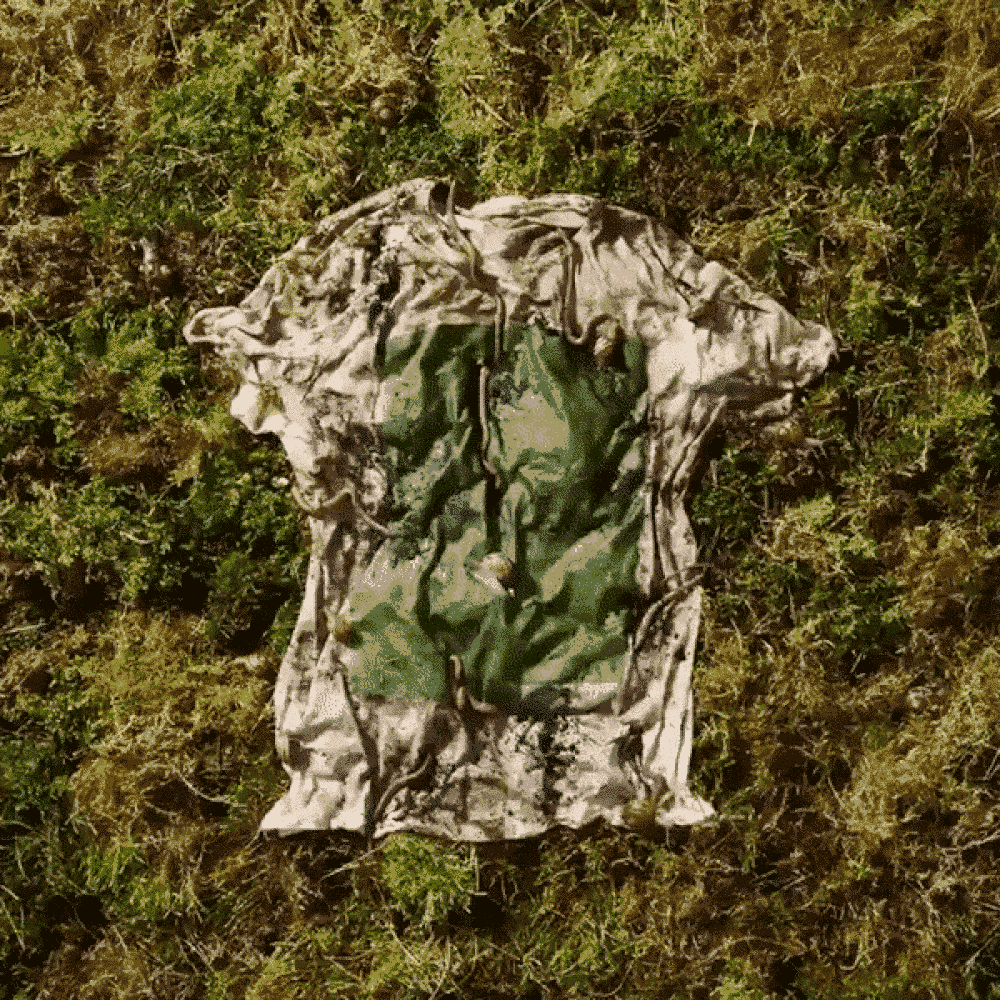
Polyester fabric is cheap, it has strong fibers that do not wear down as quickly as cotton, while being flexible and resistant to wrinkles and shrinking. No wonder synthetic fibres are about 60 percent of the material that makes up our clothes worldwide. But you know there’s a ‘but’ coming.
Tonnes of cheap nondegradable polyester clothes are being dumped in landfills, causing great problems for ecosystems. At the same time, just wearing and washing your polyester clothes, releases plastic microplastic fibers in the air and in the water. And the amount of it is shocking. In 2019 The Guardian found that an estimated 4,000 metric tons – or 13.3 quadrillion fibers – were released into California’s natural environment. The plastic fibers, which are less than 5mm in length, are primarily shed when we wash our yoga pants, stretchy jeans and fleece jackets and can easily enter oceans and waterways.
This innovative company lead by women has come up with a way to turn methane from biogas waste into a biodegradable biopolymer called PHA
So besides reducing our fashion consumption and swapping, caring and mending, we need fabrics that don’t release polluting plastics in the environment. Mango Materials is doing exactly that. This innovative company lead by women has come up with a way to turn methane from biogas waste into a biodegradable biopolymer called PHA, which can then be used to replace the plastic in our clothing and packaging. PHA is a family of biopolyesters that can be produced naturally by bacteria and other life forms.

The fabric can be biodegraded in many environments, including landfills, wastewater treatment plants, and the oceans. PHA can prevent microfibre pollution and also contribute to a closed-loop, sustainable fashion industry.
3. Running subtitles on your T-shirt
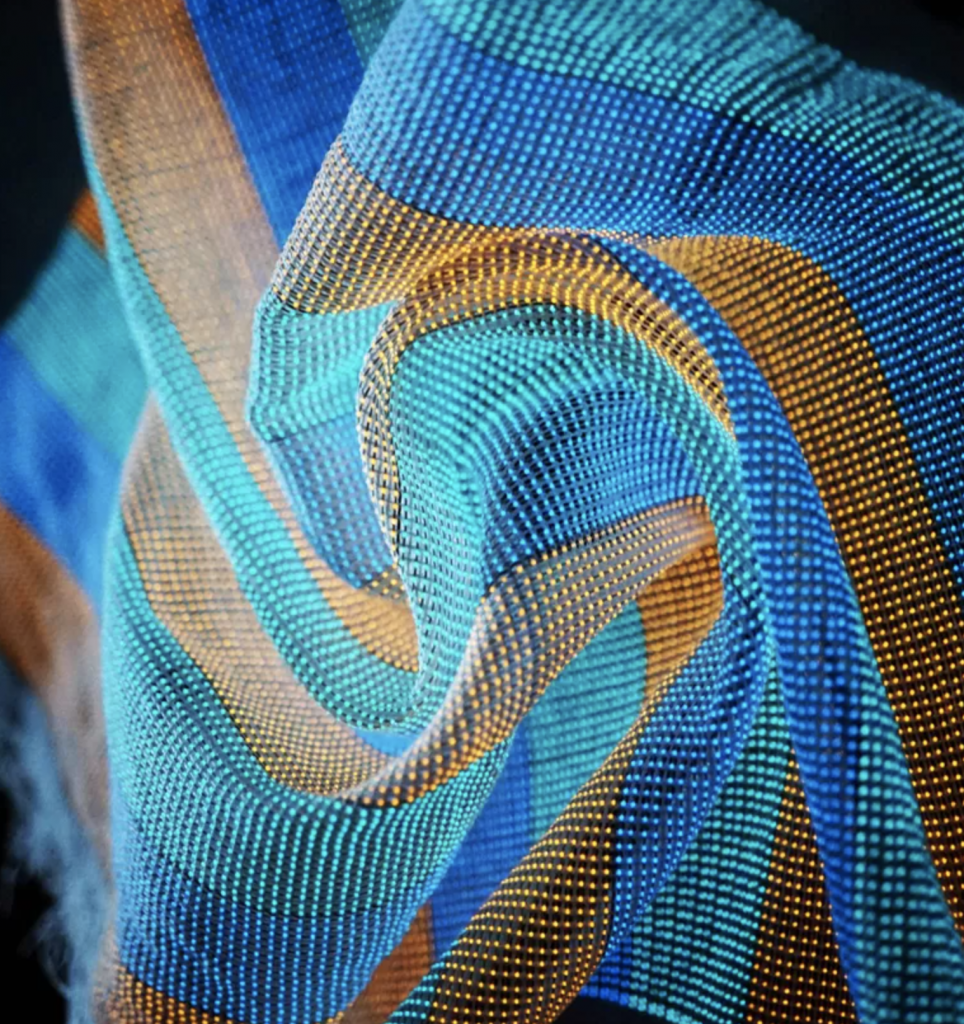
There is so much miscommunication in the world, causing a great amount of (unnecessary) pain. Imagine our clothes can diminish this, by literally communicating with other people. Chinese researchers have developed a fabric that might be able to do this. In the picture above you can see a fabric with bright colors, which are created by the display that is housed in this fabric, a weave of conductive and luminous threads. The fabric “breathes” and you can wear and wash it. You can even connect a touch-sensitive keyboard and a power supply based on solar cells.
In the study, the researchers bent, stretched and compressed the fabric a thousand times and thrown it back again. The display continued to function properly. They’ve created a piece of fabric that measures six meters by twenty-five centimeters, the Chinese makers write in the journal Nature. So don’t expect wearable displays in stores any time soon.
The makers fantasize about making interactive maps with the fabric. Or maybe you can even have your shirt do the talking for you with running subtitles if you have trouble with that for whatever reason. Imagine going to China or Russia and be able to speak with locals through your T-shirt. Or being able to communicatie with someone who’s dealing with hearing loss. I can’t wait for this invention to scale up.
